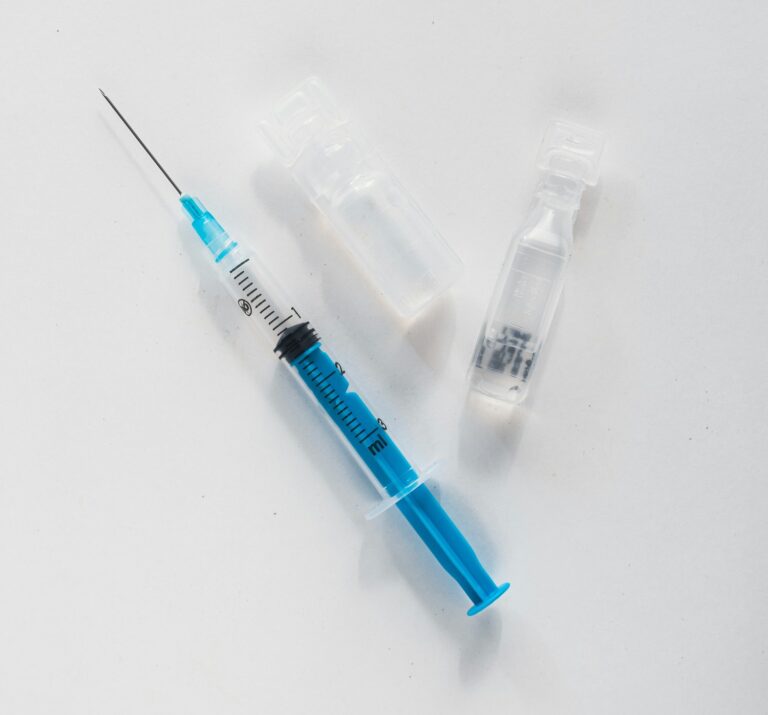Undergoing Rhinoplasty in Riyadh(تجميل الأنف في الرياض) is a life-changing decision for many people seeking facial balance, enhanced aesthetics, or improved breathing. While most patients focus on the initial recovery and short-term results, few consider how their nose—and their rhinoplasty results—will evolve over decades. Understanding what happens 20 years after rhinoplasty can help set realistic expectations about long-term changes, maintenance, and potential revisions. Even though rhinoplasty offers permanent reshaping of the nose, natural aging, environmental factors, and lifestyle habits all influence how the nose looks and functions decades later.
How Rhinoplasty Results Evolve Over Time:
Rhinoplasty permanently alters the bone and cartilage structure of the nose. In the first few years, patients experience healing, refinement, and stabilization of the results. However, as time passes, the nose continues to change just like any other facial feature. Skin elasticity decreases, cartilage weakens, and soft tissue loses volume—all of which can subtly modify the nose’s appearance. Although the foundational improvements made during surgery remain, minor shifts or sagging may occur naturally over 20 years. For most individuals, these changes are gentle and in harmony with overall facial aging.
The Role of Aging in Long-Term Rhinoplasty Results:
Aging is the most significant factor influencing rhinoplasty outcomes over two decades. The nose, like other parts of the face, undergoes structural and textural transformations. Cartilage becomes softer, skin thins, and underlying support structures may weaken, leading to slight drooping or reshaping. While rhinoplasty permanently refines the nasal framework, it cannot stop these natural processes. The good news is that if the initial surgery was done skillfully, the results age gracefully with the face, maintaining balance and proportion even after many years.
Common Long-Term Changes 20 Years After Rhinoplasty:
Two decades after rhinoplasty, patients might notice subtle changes in the appearance or feel of their nose. These can include:
-
Slight drooping of the nasal tip due to reduced cartilage strength.
-
Changes in skin texture or elasticity caused by aging or sun exposure.
-
Minor asymmetry as the facial structure naturally shifts with time.
-
Altered breathing patterns in rare cases if internal structures shift.
These changes are typically mild and do not compromise the overall results of a well-executed rhinoplasty. Regular care and attention to skin health can help preserve the aesthetic outcome longer.
Long-Term Structural Stability:
When performed by an experienced surgeon, rhinoplasty delivers long-lasting structural stability. The nasal bones and cartilage are reshaped in a way that maintains support and functionality for decades. However, patients who underwent aggressive or overly reductive rhinoplasty (especially in older techniques) might face issues such as tip collapse or breathing difficulty years later. Modern surgical methods now prioritize structural integrity, ensuring that even after 20 years, the nose remains both beautiful and functional.
Functional Changes Over Two Decades:
While most patients experience enduring improvements, a few may develop functional issues over time. These can include mild congestion, narrowing of airways, or internal scarring changes. Sometimes, these issues arise not directly from the rhinoplasty but from age-related nasal changes, allergies, or sinus conditions. Regular ENT evaluations and nasal care routines can help detect and address these concerns early, maintaining optimal breathing even decades after surgery.
The Impact of Skin and Tissue Aging:
Skin plays a crucial role in how rhinoplasty(تجميل الأنف في الرياض) results appear over time. As skin loses collagen and elasticity with age, it may slightly loosen over the nasal framework, causing small aesthetic shifts. This is especially noticeable in patients with thicker or sun-damaged skin. To slow this process, patients can:
-
Maintain a healthy skincare routine.
-
Protect the skin from sun exposure.
-
Avoid smoking, which accelerates tissue aging.
-
Stay hydrated and maintain a balanced diet rich in antioxidants.
With proper care, the skin adapts beautifully to the refined nasal structure even after many years.
Revision Rhinoplasty After 20 Years:
Some individuals may consider revision rhinoplasty two decades after their initial surgery, but this is not always necessary. Revision might be sought for reasons such as:
-
Desire for aesthetic refinement or modernization.
-
Age-related tip drooping or nasal asymmetry.
-
Breathing difficulties caused by structural changes.
-
Changes in personal preferences over time.
Modern revision techniques are highly precise and can rejuvenate the nasal appearance while preserving natural proportions. Consultation with a qualified surgeon helps determine whether revision is beneficial or if non-surgical touch-ups may suffice.
Comparing Early vs. Modern Rhinoplasty Techniques:
Those who underwent rhinoplasty 20 years ago often experienced different surgical methods compared to today’s refined techniques. Older procedures sometimes focused on reducing nasal size without reinforcing structural support, leading to potential long-term weaknesses. Modern Rhinoplasty in Riyadh techniques, however, emphasize balance, cartilage preservation, and natural results that age harmoniously. Patients considering revision after 20 years often benefit from advanced methods such as cartilage grafting or 3D imaging for improved precision.
Maintaining Results Decades Later:
Even though rhinoplasty is permanent, maintenance through good lifestyle and skincare habits ensures longevity of results. Some helpful long-term care tips include:
-
Protect the skin with daily sunscreen use.
-
Avoid trauma to the nose from sports or accidents.
-
Moisturize regularly to keep skin supple.
-
Follow up with a specialist if any breathing or aesthetic concerns arise.
By maintaining general health and taking preventive measures, patients can continue to enjoy the benefits of their rhinoplasty well into later life.
The Emotional and Psychological Impact After 20 Years:
Beyond physical results, rhinoplasty can have a lasting emotional impact. Many patients report continued satisfaction and improved confidence even decades after their procedure. The nose often becomes a settled part of one’s identity, blending seamlessly with the aging process. However, some people may experience shifting aesthetic ideals or curiosity about subtle refinements. Consulting with a trusted surgeon can help evaluate whether any adjustments are worthwhile or unnecessary.
How Aging Affects Facial Harmony Post-Rhinoplasty:
As the rest of the face matures, proportions shift—cheeks may lose volume, the jawline softens, and the skin loosens. These natural changes can subtly alter how the nose appears relative to other features. However, a well-balanced rhinoplasty maintains overall harmony. In some cases, patients opt for complementary anti-aging treatments like dermal fillers or skin tightening to preserve facial symmetry rather than modifying the nose itself.
Non-Surgical Options for Aesthetic Maintenance:
Two decades after rhinoplasty, some patients explore non-surgical treatments to enhance facial balance without undergoing another surgery. These may include:
-
Dermal fillers for subtle contouring or tip elevation.
-
Botox to relax nearby muscles and smooth lines.
-
Laser resurfacing to improve skin texture and reduce pigmentation.
Such minimally invasive treatments offer a refreshed look and can harmonize the nose with other facial features without altering its structure.
When to Consult a Specialist After 20 Years:
Even if there are no apparent issues, periodic evaluations by a qualified surgeon or ENT specialist are beneficial. Patients should seek consultation if they notice:
-
Persistent nasal blockage or breathing issues.
-
Visible asymmetry or nasal collapse.
-
Tip drooping or irregularities.
-
Desire for cosmetic update or refinement.
A professional assessment ensures early detection of potential issues and provides appropriate solutions tailored to the individual’s needs.
Longevity of Results in Different Age Groups:
The way rhinoplasty results age can vary based on when the surgery was performed.
-
Younger patients tend to enjoy smoother aging transitions since their skin adapts well to the new structure.
-
Middle-aged patients experience natural harmony as their facial features mature with the results.
-
Older patients may see more pronounced soft-tissue changes, but modern techniques ensure long-term satisfaction.
Understanding these variations helps patients plan their expectations and appreciate how rhinoplasty evolves with them.
Lifestyle Habits That Influence Long-Term Results:
Aging is inevitable, but certain lifestyle habits can either preserve or accelerate changes in rhinoplasty outcomes. To maintain the refined nasal contour for decades, patients should:
-
Avoid smoking and excessive alcohol consumption.
-
Follow a healthy diet rich in vitamins C and E.
-
Get adequate sleep and manage stress.
-
Engage in regular exercise for good circulation.
Such habits not only preserve rhinoplasty results but also contribute to overall skin health and youthful appearance.
Final Thoughts:
Twenty years after rhinoplasty, the nose continues to age gracefully with the rest of the face if the surgery was performed skillfully and maintained with care. While natural changes such as mild tip drooping or skin laxity are expected, the fundamental improvements remain intact for life. For individuals who underwent Rhinoplasty in Riyadh, the combination of advanced surgical techniques and experienced specialists ensures long-lasting satisfaction. Whether you are considering your first rhinoplasty or evaluating long-term outcomes, it’s essential to remember that with proper care, realistic expectations, and the right surgeon, rhinoplasty can deliver enduring results that beautifully complement your face for decades.


